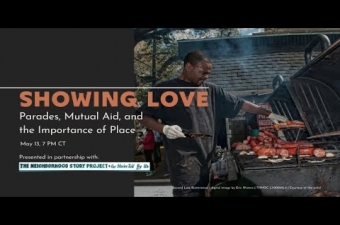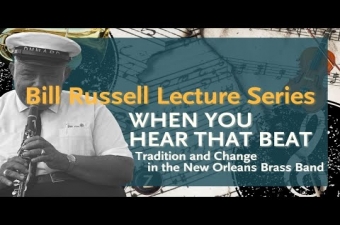Benevolent Society / Social Aid & Pleasure Club Tour
Benevolent societies and social aid and pleasure clubs (SAPCs) were integral to the birth of jazz and the evolution of New Orleans’ brass band tradition. This tour includes sites associated with these organizations over the last 200 years.
Surviving structures associated with early benevolent societies tend to come from those formed by Creoles of color who had the means to build their own meeting halls. These societies were among the first patrons of jazz bands, which played at Economy Hall, Francs Amis Hall, Perseverance Society Hall, Society of Inseparable Friends Hall, and the Autocrat Club (another one on this tour, the San Jacinto Club, was demolished by the city in the late 1960s).
Some European immigrant communities formed similar mutual aid organizations, and the Unione Italiana and New Lusitanos Benevolent Association presented lived music in their halls.
Hunter’s Field, the Treme Community Center, and the Charbonnet-Labat-Glapion Funeral Home are still gathering points for jazz funerals and second lines today.
The Backstreet Cultural Museum and The House of Dance and Feathers hold artifacts and photographs of benevolent societies and SAPCs in their collections, though the latter is temporarily closed in 2o22. Treme’s Petit Jazz Museum, run by Al Jackson, a member of the Black Men of Labor Social Aid and Pleasure Club, includes second line memorabilia as well.
Read more about the role of benevolent societies and social aid and pleasure clubs in the development of New Orleans music.
Places in this Tour
- Eagle Saloon / Odd Fellows and Masonic Hall
- San Jacinto Club
- Treme Community Center
- Backstreet Cultural Museum
- Society of Inseparable Friends Hall
- Charbonnet-Labat-Glapion Funeral Home
- Economy Hall
- Treme's Petit Jazz Museum
- Unione Italiana (aka Italian Hall)
- The Autocrat Club
- Hunter's Field
- Perseverance Society Hall
- Francs Amis Hall
- Lusitania Dance Hall/New Lusitanos Benevolent Association
- Second Line Mural on St. Claude
- The House of Dance and Feathers
Videos

"Showing Love: Parades, Mutual Aid, and the Importance of Place" from the Historic New Orleans Collection in partnership with the Neighborhood Story Project
Video by The Historic New Orleans Collection.
"Showing Love: Parades, Mutual Aid, and the Importance of Place" from the Historic New Orleans Collection in partnership with the Neighborhood Story Project

"When You Hear That Beat: Tradition and Change in the New Orleans Brass Band" from the Historic New Orleans Collection
Video by The Historic New Orleans Collection.
"When You Hear That Beat: Tradition and Change in the New Orleans Brass Band" from the Historic New Orleans Collection
Images















